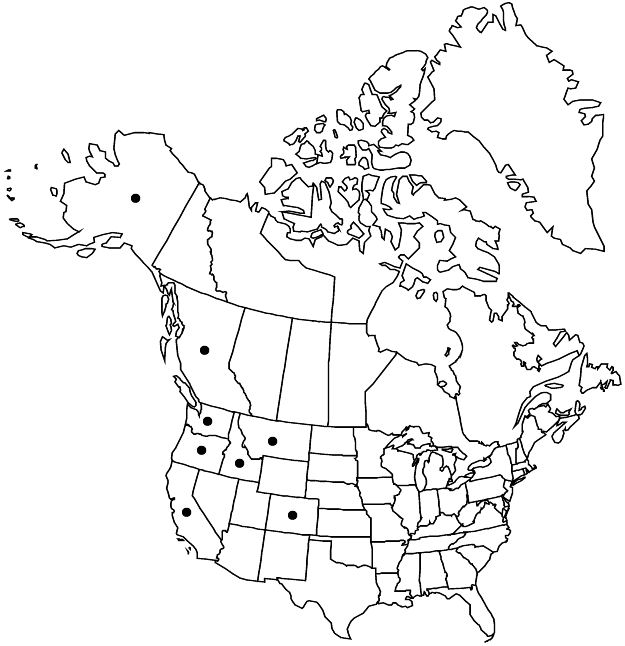Spiraea douglasii
Fl. Bor.-Amer. 1: 172. 1832.
Shrubs, 10–30 dm. Stems erect to ascending, branched. Leaves: petiole 3–5 mm; blade bicolorous, elliptic to obovate, 3–10 × 0.5–4 cm, chartaceous, base cuneate, margins serrate distally from middle, venation pinnate craspedodromous, secondary veins prominent, apex acute to obtuse, abaxial surface lanate to tomentose, glabrous, or pubescent, adaxial glabrous. Inflorescences mostly terminal, conic panicles, [5–]8–25 × 3–6[–10] cm height 2–4 times diam. branches glabrous or glabrescent to tomentose. Pedicels 1–3 mm, glabrous or tomentose. Flowers 2–4 mm diam.; hypanthia hemispheric, 1 mm, abaxial surface tomentose, adaxial glabrous; sepals ovate, 1 mm; petals light to dark pink, ovate to obovate, 1–2 mm; staminodes 0; stamens 25–35, 2–3 times petal length. Follicles oblanceoloid, 2.5–3 mm, shiny, glabrous, adaxial suture sometimes ciliate.
Distribution

B.C., Alaska, Calif., Colo., Idaho, Mont., Oreg., Wash., introduced in Europe.
Discussion
Varieties 3 (3 in the flora).
Spiraea douglasii has been popular in the garden trade and was used to develop a number of hybrids. In North America, the hybrid most likely to be encountered is S. ×billardii Hortus ex K. Koch, because the parental species are both native, although S. salicifolia was widely imported from Europe and thus S. ×pseudosalicifolia Silverside would also likely be encountered.
Selected References
None.
Lower Taxa
Key
| 1 | Leaf abaxial surfaces lanate to tomentose. | Spiraea douglasii var. douglasii |
| 1 | Leaf abaxial surfaces glabrous or pubescent | > 2 |
| 2 | Pedicels, hypanthia, and sepals tomentulose to sparsely pubescent. | Spiraea douglasii var. menziesii |
| 2 | Pedicels, hypanthia, and sepals glabrescent or glabrous. | Spiraea douglasii var. roseata |